| TeraVision
A scalable,
distributed, high-resolution video streaming system |
|
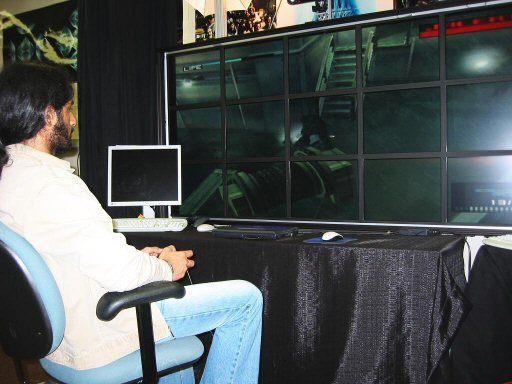
Picture of TeraVision streaming the output
of a Sony PS2 to the tiled-display
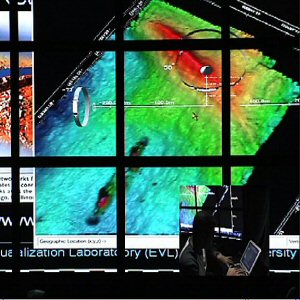
Scientist using a 6k x 3k tiled display to view
visualization rendered on his laptop.
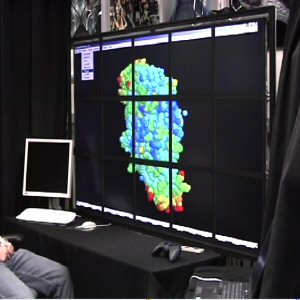
Visualization of information heavy 3D structures
|
|
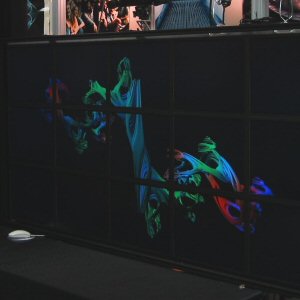 |
|
This picture shows a
400 Mbps UDP video stream coming over the
Starlight network
from Amsterdam. The video frames are pre-rendered
3D fractal animations, which are loaded into the RAM of the
TeraVision servers (at Amsterdam) and then streamed over optical
networks to the 15 clients driving the tiled-display.
The animation is the output of research by
Dan Sandin.
More information can be obtained
here. |
 |
|
Here a scientist can
be seen using a 6400 x 3072 pixel resolution tiled display for
viewing the output of a scientific visualization tool, running on
his laptop.
The laptop does not require any special software
or hardware to stream the visuals to the tiled display. |
 |
|
Here a windows desktop
is being projected onto the tiled display for viewing a 3D
molecular structure. The frame rate typically is 25 fps without
any compression.
Scientists may chose not to use compression, if
artifacts introduced by compression interfere with the data being
visualized. |
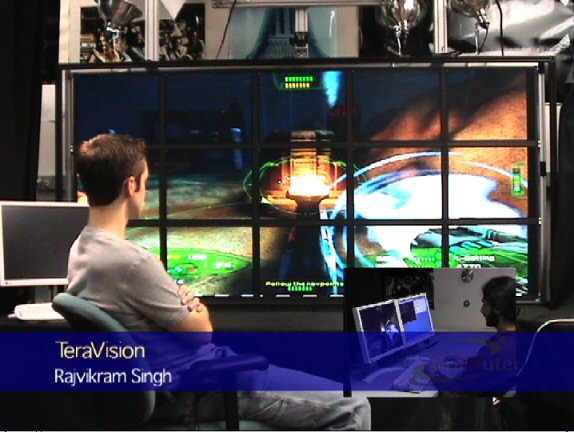 |
|
Here instead of a
serious visualization software, the output of a PC running the 3D
game, Aquanox is shown. This was a good exercise for testing the
synchronization mechanism for fast moving screens and also to
understand the lag involved with interactive software. |
 |
|
In another 'fun'
aspect, we managed to capture the output of a Sony PS2 game
console and stream it to the tiled-display.
The video input to the TeraVision servers do not
have to come from standard video sources. The framework allows new
devices to be integrated through simple plug-in interfaces. |
|
|
|
|
|
|
| |
|
|
|
 |
 |
 contact:
rsingh @ evl • uic • edu contact:
rsingh @ evl • uic • edu |
|




